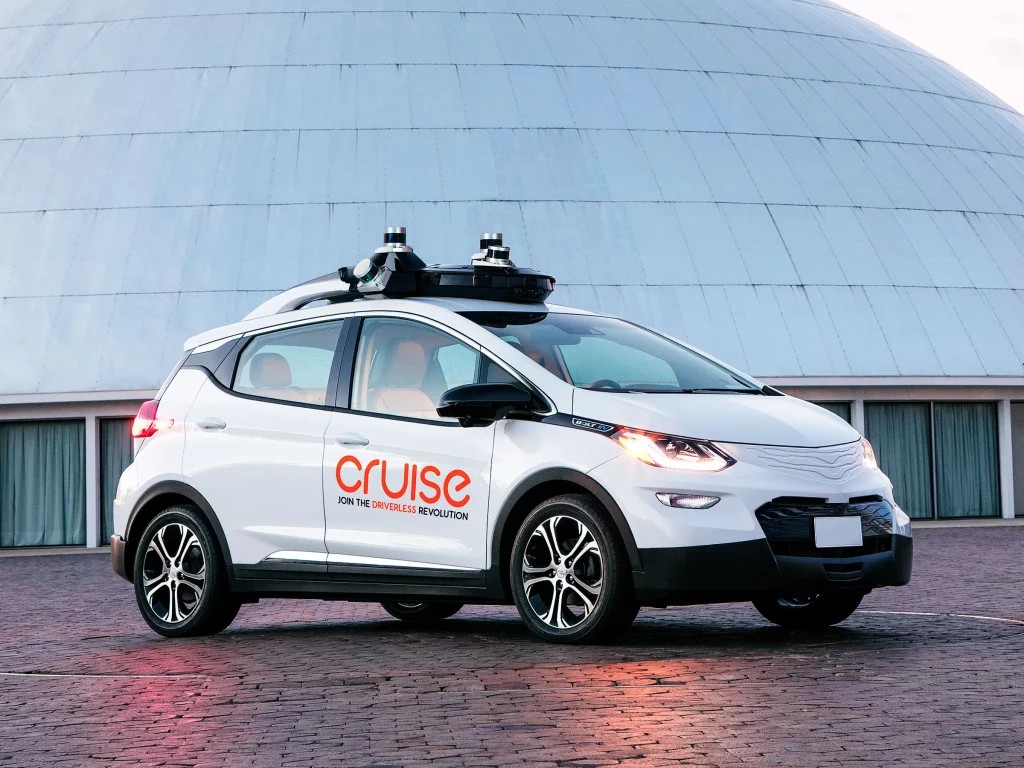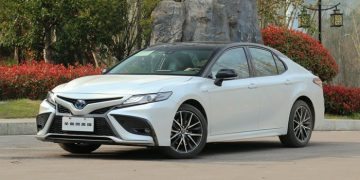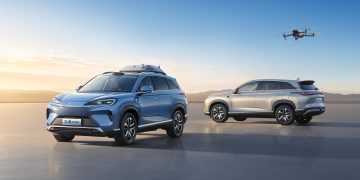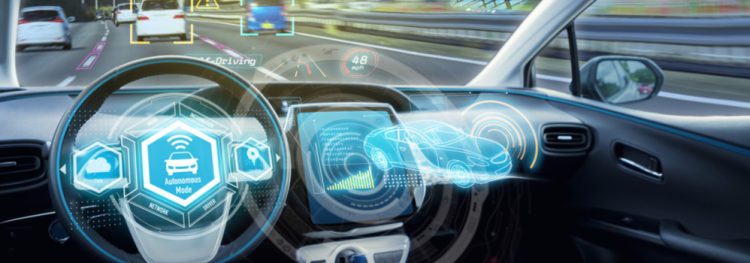1. Analyze How Autonomous Driving Technology Can Enhance the Efficiency of EVs
Self-driving technology, or autonomous driving, has the potential to significantly enhance the efficiency of electric vehicles (EVs). By leveraging advanced artificial intelligence (AI), machine learning, and sensor technologies, autonomous vehicles can optimize their driving patterns and behavior to increase energy efficiency, reduce wear and tear on the vehicle, and enhance the overall driving experience.
Optimized Driving Patterns
One of the key ways autonomous driving can improve EV efficiency is through optimized driving patterns. Human drivers often engage in inefficient driving behaviors, such as sudden acceleration, rapid deceleration, and frequent lane changes. These actions can drain the battery quickly and reduce the overall range of an electric vehicle. Autonomous systems, however, are designed to follow the most efficient routes and adjust driving behavior to minimize energy consumption.
For example, autonomous EVs can anticipate traffic conditions, adjust speed gradually, and optimize braking to recover energy through regenerative braking. Regenerative braking allows the vehicle to convert kinetic energy back into electrical energy, which can be stored in the battery. This technology, when coupled with autonomous driving algorithms, can significantly extend the range of an electric vehicle.
Route Optimization and Traffic Avoidance
Another way autonomous vehicles can enhance EV efficiency is by optimizing routes. Autonomous systems can process real-time data from various sources, including GPS, traffic conditions, and road closures, to select the most efficient routes for the vehicle. This not only reduces the time spent driving but also minimizes energy usage, as shorter and less congested routes are typically more efficient. In areas with frequent traffic congestion, autonomous vehicles can dynamically reroute to avoid gridlock, further improving efficiency and reducing energy waste.
Autonomous vehicles can also improve efficiency by reducing the frequency of stops, such as at traffic lights or stop signs. By employing advanced vehicle-to-vehicle (V2V) and vehicle-to-infrastructure (V2I) communication, self-driving EVs can synchronize with traffic signals and other vehicles to minimize stops and improve the flow of traffic. This smoother, uninterrupted movement means less battery drain from idling and frequent acceleration, which is especially important in electric vehicles where every watt of energy counts.
Reduced Maintenance Needs
Electric vehicles, in general, require less maintenance than traditional internal combustion engine (ICE) vehicles due to the simpler design of their drivetrains. Autonomous driving systems could further reduce the need for maintenance by allowing for more precise control over the vehicle’s movements. For instance, autonomous EVs can be programmed to avoid sudden impacts and minimize wear on components, such as tires and suspension systems. This would lead to fewer repairs, reduced costs, and a longer lifespan for the vehicle, ultimately making EVs even more environmentally friendly by reducing the need for parts replacement and waste.
2. Discuss the Potential for Shared Autonomous EVs to Reduce Traffic and Emissions
One of the most exciting prospects for self-driving electric vehicles is the potential for shared, autonomous EV fleets. The idea of shared autonomous EVs has the capacity to fundamentally change the way we approach mobility, potentially leading to reduced traffic congestion, lower emissions, and a more sustainable transportation system. By allowing vehicles to be used more efficiently and more widely available, shared autonomous EVs can have a significant positive impact on urban environments and the environment at large.
Reducing Vehicle Ownership and the Need for Parking
Shared autonomous EVs could dramatically reduce the need for private car ownership. In many cities, cars are parked for the majority of their lifetime, occupying valuable space and consuming resources for maintenance, insurance, and fuel. With shared autonomous EV fleets, people could access a car when needed, without the burden of ownership. This could reduce the total number of vehicles on the road, leading to a reduction in the need for parking spaces and lowering the overall environmental footprint of the transportation sector.
Additionally, autonomous EVs would likely be in constant use, traveling to where they are needed, which further improves fleet efficiency. Since the vehicles would be optimized to pick up passengers and deliver them to their destinations with minimal waiting time, fewer cars would be required to meet the transportation demands of an entire city.
Reduced Traffic Congestion
Autonomous vehicles have the ability to communicate with one another and with infrastructure, creating opportunities to reduce traffic congestion. Shared autonomous EVs could work together to avoid bottlenecks and coordinate their movements in real time, leading to smoother traffic flows and reduced stop-and-go driving.
For example, by operating in “platoons” (groups of vehicles that travel in tight formation), autonomous EVs could reduce drag and improve aerodynamics, making them more energy-efficient while also decreasing traffic volume. In cities where congestion is a significant issue, this could be a game-changer.
In addition, autonomous EVs would have the ability to respond to traffic conditions in ways that human drivers cannot. By instantly processing real-time data and adjusting routes, speeds, and behaviors accordingly, self-driving EVs could more effectively manage traffic volume and avoid delays. As a result, fewer vehicles would be needed to transport the same number of people, lowering both emissions and the environmental impact of road transportation.
Lowering Emissions
Combining shared autonomous EVs with electric power offers a double benefit for reducing emissions. Electric vehicles have zero tailpipe emissions, meaning that each additional EV on the road further reduces the overall carbon footprint of the transportation sector. Moreover, by transitioning from privately owned vehicles to shared autonomous fleets, there would be fewer cars on the road, leading to less overall traffic congestion and reduced fuel consumption.
Because shared autonomous EVs could be continually routed to areas with higher demand and maintain consistent operational schedules, fleet management would be far more energy-efficient than the current system of private vehicle ownership. Autonomous EVs would also have the potential to be integrated with renewable energy grids, allowing the vehicles to charge during off-peak hours when energy is more likely to come from renewable sources, further reducing the overall carbon footprint.

3. Explore the Regulatory and Safety Challenges of Integrating Autonomy with EVs
While the potential benefits of self-driving electric vehicles are vast, integrating autonomy with EVs also presents significant regulatory, safety, and technical challenges. As this technology continues to develop, governments, regulators, and automakers will need to navigate a complex landscape of laws, standards, and safety requirements to ensure that autonomous EVs can be safely deployed on public roads.
Safety Concerns and Testing
The safety of autonomous vehicles is a critical issue that has drawn significant attention from regulators and the public. While autonomous driving technology is designed to reduce human error and enhance safety, the technology itself must undergo extensive testing to ensure it can safely navigate the complexities of real-world driving environments. For instance, self-driving systems must be able to handle unpredictable factors such as weather conditions, road hazards, and the behavior of other drivers, which can be difficult to predict and manage.
In addition, there are concerns about how autonomous vehicles will respond in emergency situations. Will they be able to make split-second decisions, such as when to swerve to avoid an accident or when to apply emergency braking? Ensuring that autonomous EVs can react safely to a wide range of potential scenarios is crucial for the technology’s acceptance.
Regulation and Standardization
As the autonomous vehicle industry grows, regulators will need to establish clear guidelines for the development, deployment, and testing of autonomous EVs. Currently, there is a patchwork of regulations across different regions and countries, which makes it difficult for automakers to design and produce self-driving vehicles that comply with all requirements. International standardization will be essential to ensure the safe and effective deployment of autonomous EVs on a global scale.
Governments will also need to address issues related to liability and insurance. In the event of an accident involving an autonomous EV, who would be held responsible? Would the manufacturer, the software provider, or the owner of the vehicle be liable? These are difficult questions that will require new legal frameworks to address.
Cybersecurity and Data Privacy
Another challenge is ensuring the cybersecurity of autonomous electric vehicles. As self-driving systems rely on data, sensors, and communication with other vehicles and infrastructure, they are vulnerable to hacking and cyberattacks. A compromised autonomous vehicle could potentially be hijacked, leading to dangerous situations. Ensuring the integrity and security of the data transmitted by autonomous EVs is paramount for both safety and privacy.
Moreover, autonomous vehicles generate vast amounts of data, including information about passengers, routes, and vehicle performance. Protecting the privacy of this data is another critical concern, as it could be exploited for commercial purposes or fall into the wrong hands.
Conclusion
Self-driving electric vehicles represent a significant leap forward in the evolution of transportation, combining two of the most promising technologies in the quest for cleaner, more efficient mobility. The integration of autonomous driving with electric power could lead to enhanced energy efficiency, reduced traffic congestion, and lower emissions, making it a potential solution to many of the challenges facing modern cities and the environment.
However, significant challenges remain in terms of safety, regulation, and infrastructure. Autonomous EVs must be able to operate safely and efficiently in complex driving environments, and regulatory bodies must establish clear standards for their deployment. Additionally, the widespread adoption of autonomous electric vehicles will require massive investments in infrastructure, including charging networks, data privacy protections, and cybersecurity measures.
Despite these challenges, the combination of autonomous driving and electric power holds immense potential for transforming the future of mobility. If these hurdles can be overcome, self-driving electric vehicles could indeed become the ultimate green solution for transportation, providing a cleaner, more efficient, and safer alternative to current systems.











































